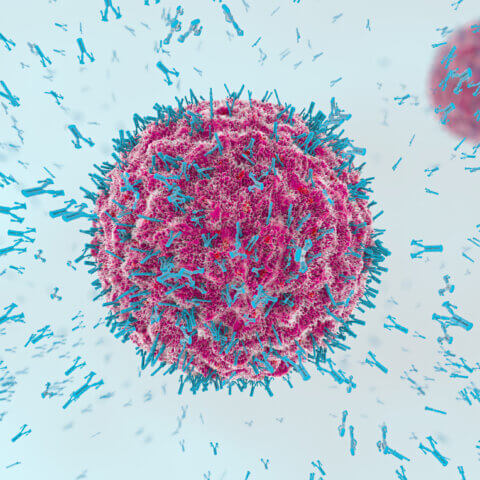Last Updated: October 16, 2025, 1 pm UTC
One of the most common formulation issues that sponsors of new drug or biologic products face is the qualification of novel excipients. Although novel excipients can be a part of any new drug application (NDA) or biologics license application (BLA) development program, they seem to be more common with the 505(b)(2) pathway, since many companies use cutting-edge delivery technologies to solve issues associated with previously approved drugs. For example, they may develop a long-acting formulation that improves patient compliance or use a new route of administration that improves efficacy or increases ease of use.
What does this qualification process look like, and what should sponsors know before introducing a novel excipient?
What is an excipient?
Excipients are ingredients separate from a drug’s active pharmaceutical ingredient (or drug substance) that are added to products to impart various properties such as binders, fillers, solubilizers, carriers, and pH adjusters. While excipients are inert and non-toxic in an ideal situation, that is rarely the case, and as a result they can pose various safety concerns. Therefore, when excipients are selected for formulating a new drug product, it is essential that they either meet current FDA standards or are qualified for use in the drug product.
Ideally, excipients are selected that can be found within the FDA’s Inactive Ingredients in Approved Drug Products database, commonly referred to as the Inactive Ingredients Database (IID). In most cases, if the excipient meets the maximum potency per unit dose and maximum daily exposure limits listed in the IID for the proposed route of administration, no additional excipient qualification work is required. However, it is important to note that, in rare instances, qualification issues can still arise, since the IID does not list the clinical indication, exposure frequency, or duration of use. For example, the excipient specifications listed in the IID may be for an acute-use product and therefore not support its safety for use in a chronically used product.
When is an excipient considered novel?
If a given excipient does not fall within the IID specifications, then the excipient is considered “novel” and needs to be qualified. However, this is not a one-size-fits-all approach, and there are different approaches and levels of qualification, too many scenarios to cover in one blog post. However, these are some of the most common scenarios, in order of increasing difficulty of qualification:
- The excipient is listed in the IID for the selected route of administration, but the new product uses a higher maximum daily exposure.
- The excipient is listed in the IID, but not for the selected route of administration. (For example, the new product is orally administered, while the IID only has listings for topical dermal use.)
- The excipient is not listed in the IID.
How is a novel excipient qualified?
For the first and second scenarios above, qualifying the novel excipient can often be accomplished by slightly modifying or expanding one or two Good Laboratory Practice (GLP) toxicology studies (e.g., rodent and non-rodent studies) already required for approval. Assuming no unique excipient-specific safety issues arise in the studies, this is a very cost-effective and straightforward approach. In some less common situations, if there is a significant amount of literature or historical use for other relevant applications like food uses and the excipient appears to be low-risk, a literature-based approach may be sufficient to qualify the excipient. As with all qualification approaches, it is best to work with nonclinical/toxicology and chemistry, manufacturing, and controls (CMC) experts to design the overall qualification program and any necessary nonclinical studies and then to obtain agency buy-in on the general approach. This agreement from the FDA during the pre-Investigational New Drug (pre-IND) stage is critical, as following an incorrect path can easily delay or derail an entire development program.
If the excipient is not listed in the IID, then a full nonclinical qualification program in alignment with the FDA’s 2005 guidance Nonclinical Studies for the Safety Evaluation of Pharmaceutical Excipients may be needed. This document is a flexible framework that takes into consideration the type of excipient, physical and chemical properties, existing safety data, proposed use, etc. Due to this flexibility, a full nonclinical qualification program can often be avoided by leveraging various sources of information and properties of the excipient itself. The number of studies needed for a full nonclinical excipient qualification program for a chronically used drug product is high, and the endeavor is very expensive. Involving nonclinical/toxicology experts early on is key to reducing the package of studies as much as possible.
What are important considerations for qualifying novel excipients?
It is a common misconception that referencing an excipient’s approved food use (e.g., a Generally Recognized as Safe [GRAS] food additive) is an easy way to qualify a novel excipient. For orally administered drug products, that may be sufficient or at least supportive for food additives that do not have any use restrictions in the Code of Federal Regulations. However, many times this information is supportive at best, as there are a number of unknowns involved in extrapolating food use to drug product use, in terms of daily exposure, food use restrictions, differences in the route of administration, etc.
For topical products, sponsors often attempt to reference the use of an excipient in cosmetic products to qualify its use in a drug product. However, in our experience, the FDA places no or minimal weight on cosmetic use, most likely because limited adverse reporting for cosmetic ingredients makes it difficult to determine the actual safety of the ingredient.
One last point to consider is that qualifying complex mixtures (e.g., essential oils for topical drug product use) can be very difficult and require not only a full nonclinical qualification package but also a full characterization of each component of the complex mixture.
While the FDA has a limited pilot program ongoing for excipient qualification, the submission deadline closed in 2021, with only a few excipients accepted into the program. Therefore, the most efficient process for excipient qualification is to work with nonclinical/toxicology and CMC experts to assess and design the qualification strategy, develop the nonclinical program, and obtain the FDA’s acceptance during a regulatory interaction. Premier Research has helped sponsors successfully qualify their novel excipients for a wide array of products and clinical indications. Contact us today to find out how we can support your program.

 Webinar
Webinar 


 Perspectives Blog
Perspectives Blog 